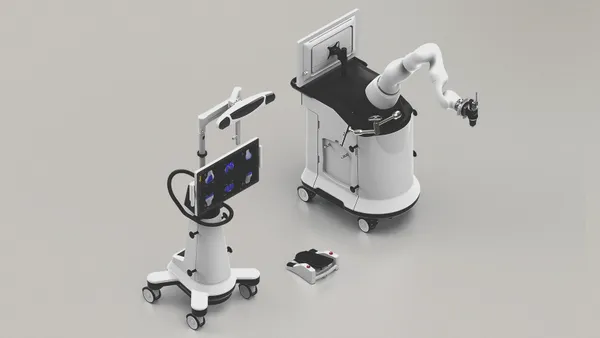Dive Brief:
-
A 3,000-patient trial has linked initial laryngeal tube (LT) insertion to better outcomes than endotracheal intubation (ETI) in people who suffer out-of-hospital cardiac arrests.
-
Traditionally, emergency teams used ETI to resuscitate patients. While this is the favored approach in hospitals, the data suggest LT insertion is a better bet for treating cardiac arrests outside of these settings.
-
The difference between outcomes in the LT and ETI groups was small, but the large number of out-of-hospital cardiac arrests mean switching to the former approach could save 10,000 lives a year.
Dive Insight:
Cardiac arrest occurs when the heart stops beating, cutting off blood flow to the brain and other vital organs. In hospitals, healthcare professionals respond by intubating and trying to resuscitate the patient. Emergency crews follow the same approach when a patient suffers a cardiac arrest at home or in another non-hospital setting, but the outcomes achieved are poor. Of the 350,000 people who have out-of-hospital cardiac arrests in the U.S. each year, less than 90% survive to hospital discharge.
Now, an NIH-funded trial has generated data suggesting LTs deliver better outcomes than ETIs. In the LT cohort, 18.3% of the 1,505 patients were alive after 72 hours. That beat the 15.4% rate of 72-hour survival seen in the ETI group, resulting in the trial hitting its primary endpoint with a p-value of 0.04. Similarly slight but statistically significant differences between the LT and ETI cohorts were seen in other parts of the trial. Patients in the LT group were more likely to survive to hospital discharge and have a favorable neurological status when they left the facility than those in the ETI cohort.
The findings potentially reflect differences in the ease of use of the devices. Insertion of ETIs often failed on the first attempt. In a minority of people, more than three insertion attempts were needed. These problems did occur in the LT cohort but were far less frequent than in the ETI arm. The time to first insertion attempt was shorter in the LT group, too.
Some of these findings contradict earlier studies, which have reported far higher rates of successful ETI, and the size and pragmatic design of the latest trial suggest further research is needed to validate the findings. Even so, some of the researchers are talking up the potential for the findings to save lives.
"This study demonstrated that just by managing the airway well in the early stage of resuscitation, we could save more than 10,000 lives every year," the NIH’s George Sopko, a co-author of the study, said in a statement.
Germany’s VBM Medizintechnik developed the first LT and began selling it in Europe in the late 1990s. King Systems, now part of Ambu, markets a LT in the U.S.












